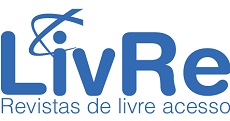Uma análise bibliométrica sobre eletrolise PEM ou alcalina para a produção de hidrogênio baseada na Scopus
DOI:
https://doi.org/10.36661/2596-142X.2024v6n1.14524Palavras-chave:
Hidrogênio verde, Bibliometrix, análise bibliométrica, Eletrólise PEM, Eletrólise alcalinaResumo
O hidrogênio verde tem se tornado o centro das atenções no cenário mundial uma vez que permite a obtenção de calor, para diversos fins, sem a geração de gases indesejáveis. Logo, cada vez mais estudos estão relacionados a este tema haja vista são muitos os desafios da produção verde e da forma e meios de uso. Para a produção desse hidrogênio, uma técnica necessária é a eletrolise da água que pode ocorrer pelo método PEM ou alcalino. Este artigo busca avaliar as tendências das publicações na área da eletrólise PEM ou alcalina para a produção do hidrogênio a fim de fazer essa análise no espectro das publicações voltado tanto para o contexto mundial quanto para o contexto nacional, sendo possível analisar os artigos com mais citações, as instituições mais relevantes, que países vêm trabalhando na área, quais revistas produzem sobre este assunto, além de observar que lacunas precisam ser mais preenchidas com estudos e pesquisas. Para tal finalidade, fez-se uso da base Scopus considerando algumas palavras chaves, como ("alkaline electrolysis" or "electrolysis alkaline" or "PEM electrolysis" or "electrolysis PEM" and "hydrogen") e, posteriormente, foi feita análise dos dados dos documentos encontrados no Bibliometrix. O objetivo do presente trabalho trata de identificar a evolução do tema e mostrar a posição do Brasil no cenário mundial.
Downloads
Downloads
Publicado
Edição
Seção
Licença
-
O(s) autor(es) autoriza(m) a publicação do artigo na revista;
-
O(s) autor(es) atesta (m) que a contribuição é original e inédita e que não está em processo de avaliação em outra(s) revista(s);
-
A revista não se responsabiliza pelas opiniões, ideias e conceitos emitidos nos textos, por serem de inteira responsabilidade de seu(s) autor(es);
-
É reservado aos editores o direito de proceder ajustes textuais e de adequação do artigo às normas da publicação;
-
Autores mantêm os direitos autorais e concedem à revista o direito de primeira publicação, com o trabalho simultaneamente licenciado sob a Creative Commons Atribuição 4.0 Não Adaptada, que permite o compartilhamento do trabalho com reconhecimento da autoria e publicação inicial nesta revista














